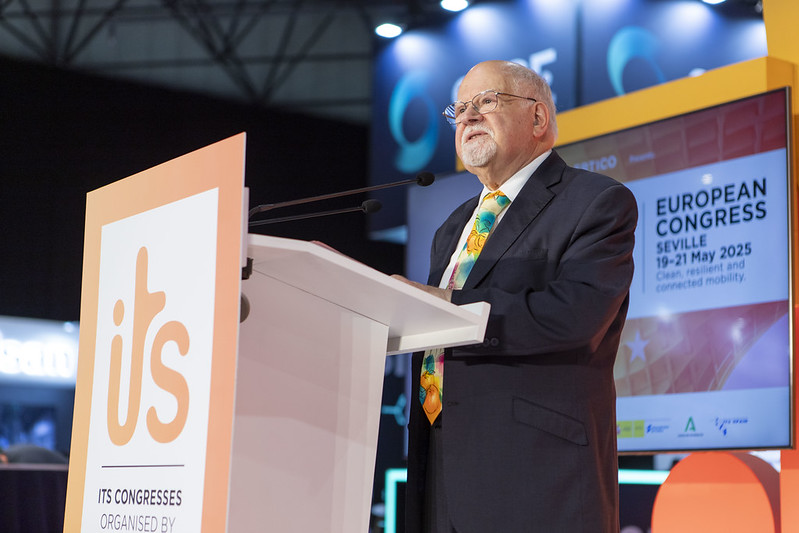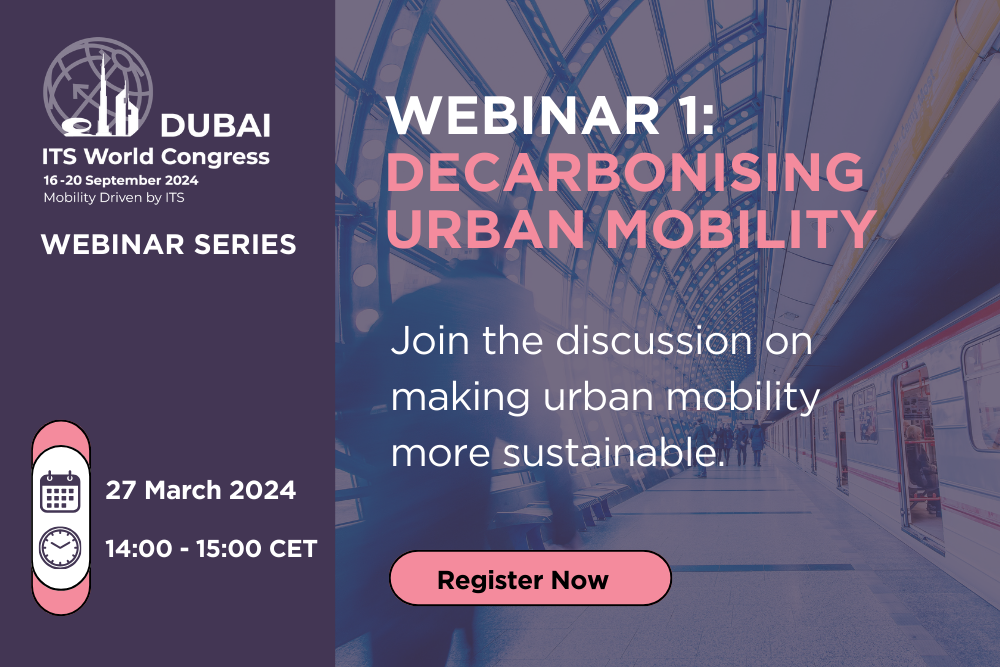Future traffic management was discussed in the latest ERTICO-ITS Europe webinar in the run-up to the ITS European Congress, which takes place at the Lisbon Congress Centre from 22-24 May 2023. You can register here for the fourth and final webinar on Thursday, 11 May 2023: ‘Freight & Logistics and the Data Value Chain’.
“Integrated traffic management is the key to smarter, cleaner and safer mobility in a multimodal future,” says Joost Vantomme, CEO of ERTICO-ITS Europe. “This is why traffic management is a central theme when we come together in Lisbon, as we continue to scale-up from pilot projects to full-scale deployment.” Areas under discussion will range from Big Data, analytics, simulation and modelling, through policymaking, standards and interoperability, to physical and digital infrastructure, cross-border approaches, sustainability, emergency and incident management, and the overall resiliency of systems and service networks.
A new paradigm
“We’ve been working with the TM2.0 Innovation Platform and community for almost a decade,” says Dr Johanna Tzanidaki, ERTICO’s Chief Innovation Officer. “Integrated traffic management is itself a game changer. TM 2.0 is all about collaboration and trust among its public and private stakeholders, aligning information for drivers and ensuring consistency, and enabling co-opetition among the various players who are all working to shared priorities.”
With benefits including reduced congestion, lower emissions, time savings and fewer accidents, the road to a new traffic management ecosystem presents many challenges as well as opportunities. When multimodal transportation management provider SWARCO asked its global customers what is hindering the deployment of future traffic management, “The common denominator was the capability to share and process data from different systems,” says Dr Laura Coconea, Head of Portfolio Management ITS Division, SWARCO. “It all starts from data, then bringing together a patchwork of independent systems, and embracing solutions that position you at the forefront of innovation.” This is why, she says, cities are increasingly outsourcing technical interface management and managing manage multiple business models and contractual arrangement to platforms such as SWARCO’s MyCity.
Enabling such as paradigm change is a major undertaking. The question is, how can you move from smaller-scale pilots to the full-scale deployment of smart traffic management solutions – in cities the size and complexity of, say, London? “Our Surface ITS Programme covers four key areas, providing the tools we need to be the strong, green heartbeat for London,” says Irfan Shaffi, Operational Control Manager at Transport for London. First, the Real Time Optimiser (RTO) will replace the existing traffic management system. Second, the Common Operational View Incident Management System (COV IMS) will integrate all traffic management tools into a single system: “This will revolutionise what we can do for our city and the people who travel around it: we’ll be able to detect and respond to incidents far faster.” Third, Data & Analytics will provide high-quality meaningful inputs and new insights. And fourth, new Predictive capabilities will enable pre-emptive mitigation measures. Irfan says this is all being built in a staged fashion: starting with small pilots on the streets and scaling up, with continuous releases of functionality, and in a way that de-risks TfL’s operation while a new London-wide tool is deployed.
As TfL’s experience illustrates, predictive capabilities through simulation and modelling are a critical aspect of future traffic management. “Traffic simulation represents a Digital Twin of people and freight movements, and is used for capturing transport services planning, up to the level of operations,” says Dr Tamara Djukic, Senior Manager of Innovation & Deployment, ERTICO. This reflects a paradigm shift in how interactive traffic management is deployed, from a responsive stance to a proactive approach founded on data integration, collection and analytics: understanding travel patterns, detecting emerging events, and predicting the future traffic state, coupling AI with real-time traffic simulation tools.
Sustainability impacts
Another dimension in future traffic management is the sustainability impact generated by more efficient traffic flows and reduced congestion. “There are three levels of impact – on ITS system operations, direct impacts, and indirect impacts,” says Jop Spoelstra, Innovation Manager at Technolution. In direct impacts, his company worked with the city of Copenhagen to prioritise cycling, using real-time traffic management information to promote this more sustainable mode of transport, and with San Francisco to improve road safety, reduce delays and cut emissions by prioritising public transport. However, Jop says, the real long-term gains are from the indirect impacts: “Regulating traffic through urban vehicle access regulations not only reduces vehicle volumes and emissions, it also means increased road safety, promotes a modal shift towards micromobility, increases retail revenues, and even impacts on electricity grid demand. In my view, the golden bullet is the scope of these indirect impacts, including behavioural change, with huge potential long-term gains.”
The resiliency of transport systems – their ability to recover from disruption – is yet another strand to consider. “Our transportation management systems need to be more flexible and adaptable to address new demand patterns, as seen during the pandemic, while reshaping mobility in the face of climate change requires systems that encourage more sustainable practices,” says Pedro Barradas, Chief Strategy Officer at Armis ITS, and President of ITS Portugal. Echoing the experiences of SWARCO, TfL and ERTICO itself, he says real-time data and analytics are the foundation of enhanced traffic management, with the rise of advanced mobility management systems and new opportunities in decision support and system dynamics.
‘Our most comprehensive European Congress to date’
“Lisbon will be a very comprehensive European event, with future traffic management a central element,” says Lisa Boch-Andersen, Director of Communications, Congresses & Events, ERTICO. In addition to a high-level programme that includes the first Smart Mobility Summit of Cities and Regions, Lisa says, “we received a tremendous number of high-quality submissions for the Technical Programme. Attendees can also experience live demonstrations that showcase ITS in action. These include helping Green Deal cities to reach their environmental goals (SWARCO), CTAG’s autonomous and connected shuttle, and the NordicWay 3 project presenting C-ITS services in a Polestar 2 electric performance fastback”.
Watch the webinar and panel discussion on-demand here.
Save the date, 11 May for our final Webinar on Freight & Logistics and the Data Value Chain.
Register here for #ITSLisbon2023 – early bird rates end on 17 April.
The congress app launches in early May.
Visit www.itseuropeancongress.com for more details including partnering and sponsorship opportunities. You can learn more about Lisbon here.
The post Redefining traffic management: the heart of future mobility appeared first on itseuropeancongress.com.




